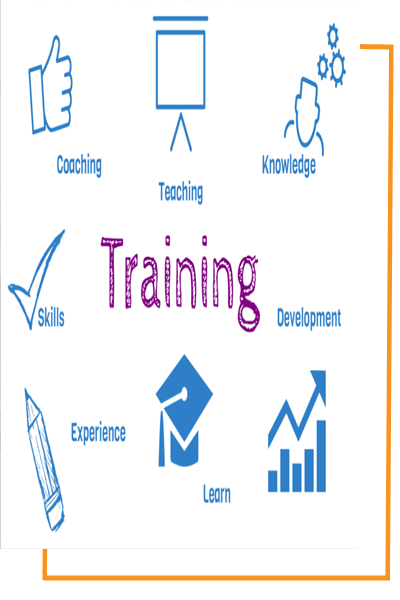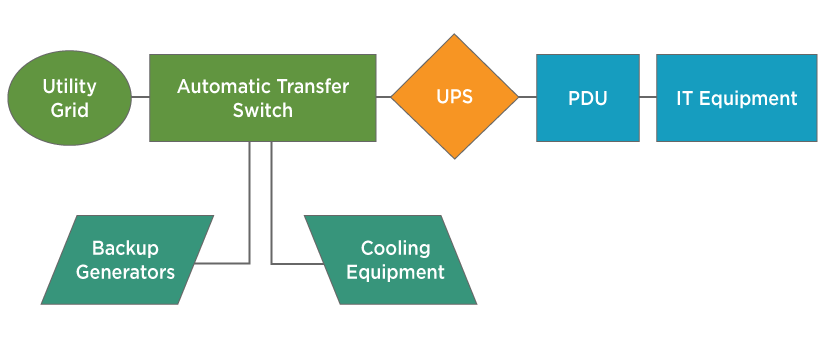Having spent almost two decades in the industry, Cypress Solutions has garnered a lot of practical, hands-on knowledge, which we are now making available to technicians and engineers who want to become leaders in the field. To accomplish this, we have collaborated with the industry’s leading manufacturers, technology leaders and domain experts to design a course that is contemporary and 100% relevant to current industry needs.

Mission Critical Infra Engineer
For executives, managers, and operators, the MCIE course provides end-to-end coverage of the systems that support typical Mission Critical Infrastructures and environments with high availability requirements; providing a full understanding of the main components that comprise the Mission Critical Infra build.

Mission Critical Infra Specialist
A course for professionals who aim to become experts in the field, MCIS provides extensive information to infrastructure architects, designers, engineers, consultants and auditors; as well as facility operators, IT, application, and project managers. It contains selection and design knowledge that will assist engineers in formulating the appropriate framework for their Mission Critical Infrastructure.

Mission Critical Infra Designer
MCID targets developing experts who can lead in the Mission Critical Infrastructure industry as consultants, architects and subject matter experts. It provides professionals with complete skill sets, from foundational, to engineering, design and grading concepts; clarifies industry taboos and gray areas, and resolves ambiguities as to how to plan, design and build Mission Critical Infrastructures.

Mission Critical Infra Professional
MCIP covers power, cooling, safety, security, ICT, application and standardization parameters for the developing, designing and building of a Mission Critical Infrastructure. It equips infrastructure experts with technology roadmaps that aid in the design & appraisal of Mission Critical Infrastructures, and ensure modularity and flexibility for enhancement of sustainable reliability, efficiency and availability.


Mission Critical Infra Engineer
For executives, managers, and operators, the MCIE course provides end-to-end coverage of the systems that support typical Mission Critical Infrastructures and environments with high availability requirements; providing a full understanding of the main components that comprise the Mission Critical Infra build.

Mission Critical Infra Specialist
A course for professionals who aim to become experts in the field, MCIS provides extensive information to infrastructure architects, designers, engineers, consultants and auditors; as well as facility operators, IT, application, and project managers. It contains selection and design knowledge that will assist engineers in formulating the appropriate framework for their Mission Critical Infrastructure.

Mission Critical Infra Manager (MCIM)
MCIM is for managers, executives, directors and strategic planners who are involved with the operational aspects of running the MCI. Disaster recovery and capacity planning, health and safety criteria, enhancement and upgrade management, risk mitigation and migration principals, as well as growth modeling and schemes, HR roles and responsibilities, and vendor management of OLAs and SLAs are all covered in the program.

Mission Critical Infra Management Professional (MCIMP)
A course for Mission Critical Infrastructure Managers who are in charge, not only of MCI operations, but of the entire MCI management cycle, MCIMP covers management concepts, challenges, capacities and strategies as well as technological aspects and deciding factors in determining and implementing best management principles.

Following is the minimum qualification required to start your career as Mission Critical Infra Technician:

12th Grade in Science Stream (Physics, Mathematics & Chemistry) + ITI, or Diploma in Electrical, Mechanical and Electronics, with minimum 2 years of relevant industry experience.

Fresh B.E. or B.Tech in Electrical, Mechanical and Electronics stream.

12th Grade with Science Stream (Physics, Mathematics & Chemistry) and Fresh BCA can get into our specialized application software intensive courses like IBMS & DCIM.

Most contemporary & industry relevant training program in India – available exclusively with CSPL.

Higher version of the course available for working professionals – minimum passing percentage 75%.

Created & acknowledged by industry professionals & technology owners (OEMs) for industry usage, offering a higher chance of acquiring a job, post-training – and possibly at CSPL itself.

Training Programs are related to core infra components, which increases the probability of getting a job, as well as prepares you for multiple job opportunities and industry domains.

Virtual classroom ensures that the same high standard of quality is delivered across the country, and that upgrades reach each student simultaneously, while LMS enables CSPL, students and parents to track the student’s performance.

12th Grade in Science Stream (Physics, Mathematics & Chemistry) + ITI, or Diploma in Electrical, Mechanical and Electronics, with minimum 2 years of relevant industry experience.

Vast industry experience and presence in a large metro (NCR – Delhi) enables us to get, and retain, the very best trainers.

Country-wide access between students & industry (Job Providers, Job Seekers & HR Recruiters, all face-to-face)

Computer Based Training (CBT) Programs for students worldwide.

Examinations conducted separately on each subject.

All streams certified by an industry OEM, NSDC (in process) & CSPL; opening up multiple avenues for the student.

Practical training, as opposed to simply book learning, gives the student an industry-relevant, experience-based career growth path, built around professional training.

Reasonably priced, and 100% job assurance OR your money back guaranteed.
